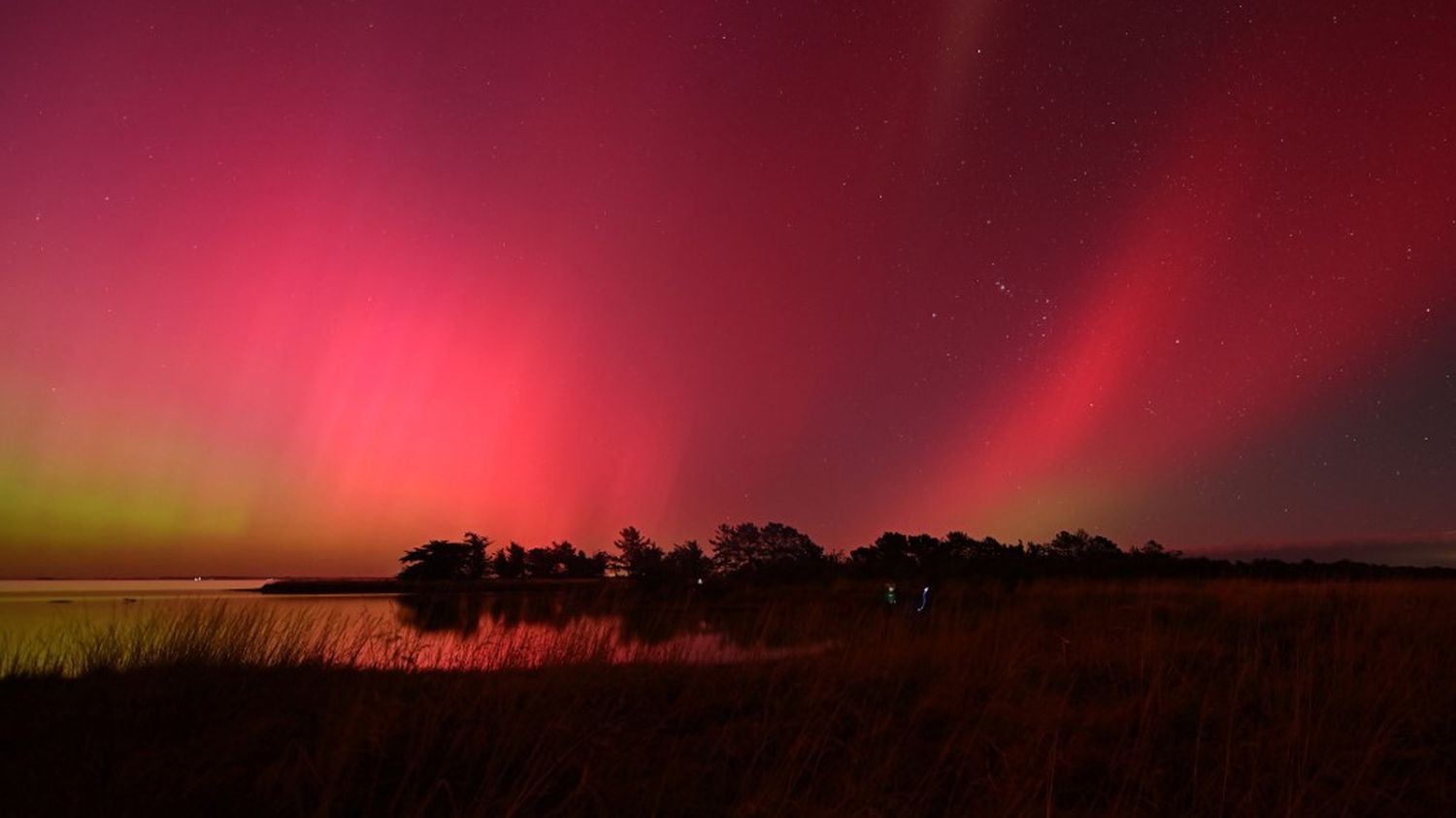From Canada to New Zealand via Europe, amateur and professional photographers have captured these celestial phenomena, rare in certain regions.

Published
Reading time: 3 min

Fifty shades of pink in the night sky. While a solar storm “extreme” began to strike the Earth on Friday, May 10, the night was adorned with the pale or fluorescent colors of the Northern Lights, much further south than in the regions where they are usually observable.
The phenomenon could recur during the night from Saturday to Sunday, warns the astrophysicist Eric Lagadec, on. It was he who had already drawn attention to the visible auroras “everywhere in France”Friday night.
“You must leave any lit area and look towards the North”looking for the Big Dipper, easy to spot, to hope to see an aurora borealis in France, explains Olivier Sanguy, editor-in-chief of space news at the Cité de l’espace in Toulouse, Saturday on franceinfo. “Maybe we’ll have redness in the sky [samedi] evening” but it remains “forecasts”. “You have to go a little into the countryside, because the urban lights illuminate the sky more strongly than the faint glow of the auroras”he further specifies.
This phenomenon is caused by the arrival on Earth of a series of coronal mass ejections from the Sun. The storm is expected to continue through the weekend, with additional ejections, NOAA added. Seven in all were observed, coming from a sunspot measuring about 17 times the diameter of Earth. The first one, “very strong”reached Earth on Friday around 4:30 p.m. GMT.
But even the brightness of a metropolis like Paris did not prevent the curious from enjoying, on Friday evening, a rare spectacle at this latitude, because storms first affect the poles. But the stronger a storm, the farther from the poles it is visible. This has reached level 5, the highest, announced the American Oceanic and Atmospheric Observation Agency (NOAA). In these conditions, “GPS, power grids, spacecraft, satellite navigation and other technologies may be affected.”
A large part of Europe was affected and photographers had a blast, as below, in the Netherlands, England and Germany.



In North America, Canada and the northern half of the United States have also been able to observe the Northern Lights. Operators of satellites, communications and the continent’s power grid have been notified to take precautionary measures.



In the southern hemisphere, where we speak of the southern lights, the night has also taken on almost fluorescent colors, as in New Zealand or Australia, where a traveling photographer captured “an absolutely biblical sky” on the island of Tasmania, around 4 a.m.
